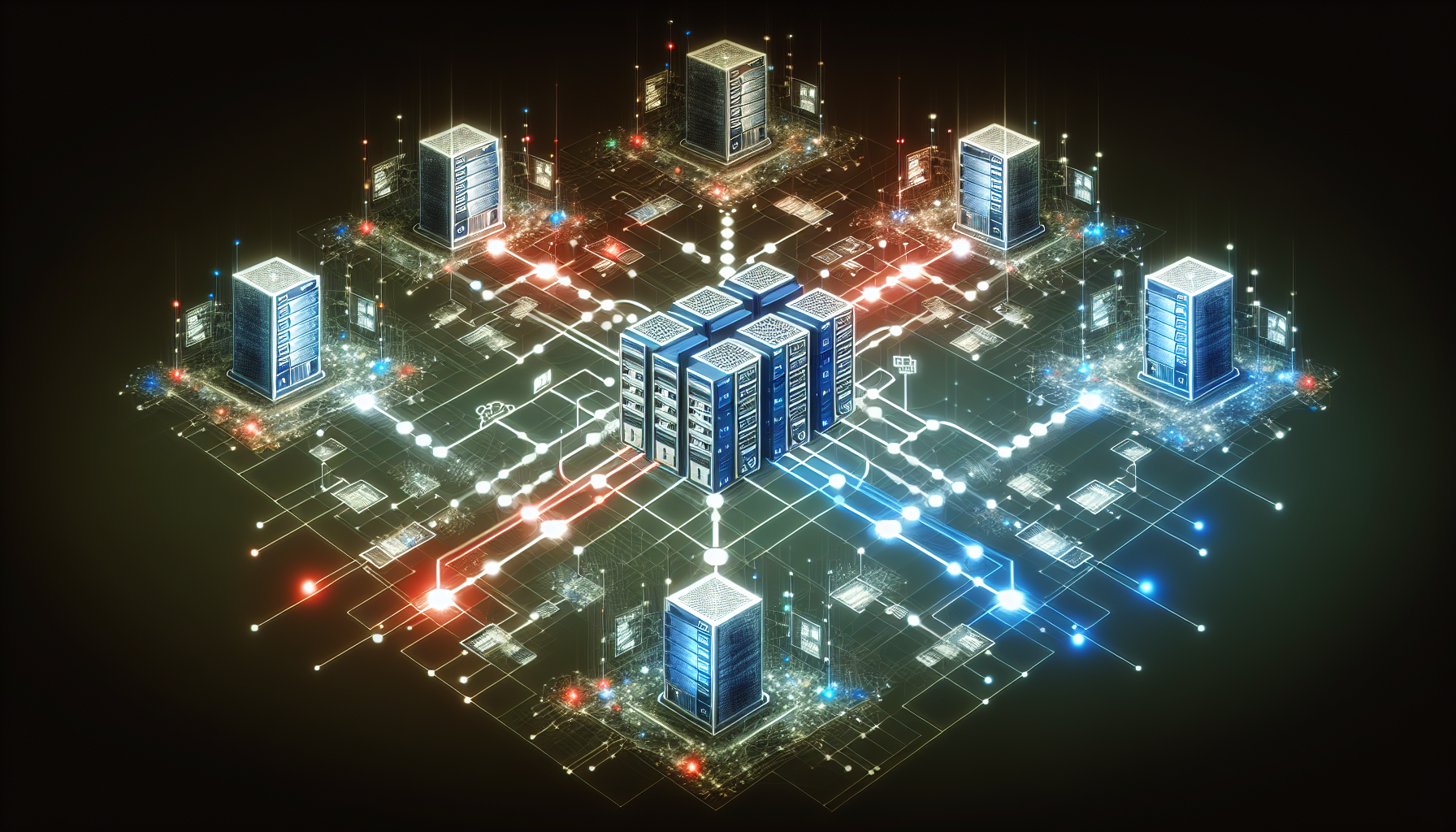Imagine you’re running an online store that’s growing fast. At first, everything works fine on a single server. But as traffic surges, the site starts lagging, and any hiccup can mean lost sales. You decide to scale up by distributing the workload across multiple servers. Now you’ve entered the world of distributed systems, a world where tasks are shared across different machines working in sync to give users the seamless experience of a single, powerful system. But distributed systems aren’t just about adding more servers. They’re designed to handle big data, massive user demands, and unexpected failures gracefully.

In this post, I will discuss the key characteristics that make distributed systems so effective. These aren’t just theoretical ideas—they’re principles that power our daily interactions with giants like Google, Amazon, and Facebook.
If you want to read on medium.com click here.
1. Scalability: Growing with Demand
Picture a small bakery that starts with a single oven. As its popularity grows and more customers flock in for their delicious pastries, the bakery doesn’t just rely on that one oven. Instead, it adds more ovens, each taking on part of the workload. This concept of adding more resources to meet increasing demand is what scalability is all about in distributed systems.

In the digital world, applications often experience fluctuations in demand. Distributed systems shine here because they can scale horizontally, meaning more machines can be added to handle the increased load. Just like the bakery, these systems can grow effortlessly, ensuring they remain efficient and responsive, no matter how big they get.
Scalability is what lets Google serve billions of searches daily or Facebook manage your feeds alongside those of billions of other users. Distributed systems can grow with the business, and this characteristic makes them a perfect fit for scaling businesses.
2. Fault Tolerance: Staying Resilient Under Pressure
Imagine a grand library with countless books. If one section catches fire, the rest of the library remains intact, safeguarding the treasure trove of knowledge. This resilience is akin to fault tolerance in distributed systems. They are designed with redundancy and replication, so if one component fails, others take over seamlessly.

In a distributed system, data and processes are duplicated across multiple nodes. This means that even if a few nodes encounter problems, the system as a whole continues to operate without a hitch. It’s like having multiple backups of a precious photo album stored in different locations – even if one copy is lost, the memories remain preserved.
In a perfect world, everything would work 100% of the time. But in reality, components fail: servers go down, networks disconnect, and data can become unavailable. Distributed systems need to handle these failures smoothly without affecting users. Fault tolerance is a built-in characteristic that helps the system remain available despite issues.
3. Consistency: Keeping Everyone on the Same Page
Imagine a choir where all the singers must be in sync to create beautiful music. In distributed systems, consistency ensures that all nodes agree on the state of the data, maintaining harmony across the system. Various consistency models, such as strong consistency, eventual consistency, and causal consistency, offer different balances between performance and data accuracy.

In distributed systems, data is often spread across multiple nodes. So what happens if two users in different locations update the same data simultaneously? Consistency ensures that all users see the same version of data, regardless of where they are.
4. Availability: Ensuring Constant Access
For distributed systems, availability means being ready whenever users need it. Whether it’s a quick online search or processing a streaming request, availability is critical. And for many systems, availability is measured in terms of “uptime,” the percentage of time a system is operational.
Distributed systems handle availability by avoiding single points of failure. For instance, if one server crashes, others pick up the slack.
5. Concurrency: Handling Multiple Tasks at Once
Visualize a well-choreographed dance where multiple performers move in perfect synchronization, each contributing to the overall spectacle without getting in each other’s way. This dance is a metaphor for concurrency in distributed systems. These systems handle numerous tasks at the same time, maximizing resource utilization and improving performance.

Whether it’s processing transactions or serving web pages, distributed systems manage concurrent operations with finesse. This ensures that everything runs smoothly and efficiently, much like a bustling kitchen where chefs work simultaneously to prepare a feast.
6. Transparency: The Invisible Hand
Imagine watching a magic show where the magician performs incredible tricks, but the audience is blissfully unaware of the complex maneuvers happening behind the scenes. This sense of wonder and simplicity is what transparency brings to distributed systems. Users and developers interact with the system without being bogged down by its underlying complexities.

There are different types of transparency:
- Location Transparency: Users don’t need to know where resources are physically located.
- Access Transparency: Resources are accessed uniformly, regardless of their location.
- Replication Transparency: The replication of resources is hidden from users.
- Failure Transparency: Users shouldn’t notice when failures happen; the system seamlessly reroutes or recovers.
Transparency ensures that the system is easy to use and manage, even though it might be incredibly intricate under the hood.
7. Latency and Bandwidth Optimization: Keeping it Fast
Imagine a relay race where the speed of passing the baton determines the outcome. Latency in distributed systems is the time taken for a message to travel from one node to another. Minimizing latency is essential for maintaining high performance, especially in time-sensitive applications.
For example, when a user in New York searches for a movie on Netflix, it’s faster to get it from a nearby server than from one halfway across the world. By using caching and load balancing, Netflix reduces latency, so users can enjoy high-speed streaming without interruptions.
8. Security: The Guardian at the Gate
Security is a top priority in distributed systems because they span multiple locations and involve communication across networks. Distributed systems employ encryption to secure data, access control to restrict who can see and modify resources, and monitoring to detect and prevent unauthorized access.

Imagine a financial institution using a distributed system to manage account data. Encryption ensures that even if someone intercepts the data, they won’t be able to read it without the correct decryption key. Access control makes sure only authorized employees can view sensitive data, and monitoring tools alert administrators to any unusual activity.
Conclusion
Distributed systems are powerful engines that keep modern applications running smoothly, delivering high performance, resilience, and accessibility. They enable companies to expand globally, handle heavy traffic, and keep systems available 24/7. Every time you search, shop, stream, or transact, a distributed system is likely working behind the scenes to make your experience seamless.

